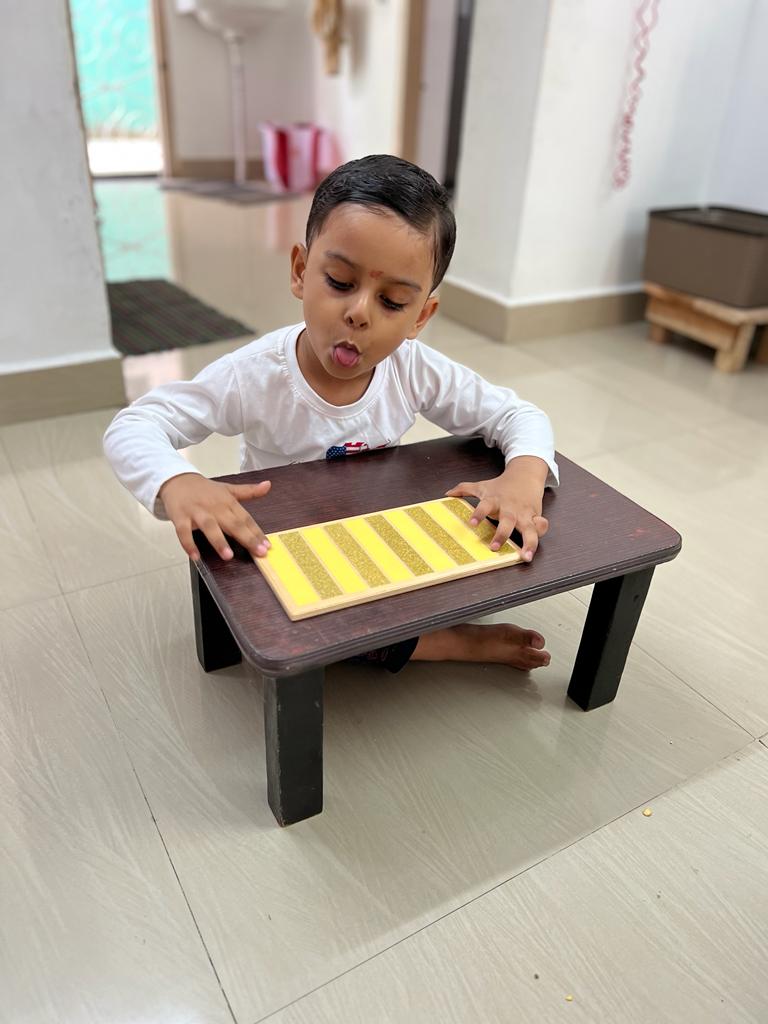Sep 8, 2023 by Chisel Montessori School

The Montessori Touch Boards are indeed a valuable sensorial material used in Montessori primary programs to help children develop their sensory perception, particularly their ability to discriminate between different textures.
Aims of the Montessori Touch Board Activity:
• Discrimination of Smooth and Rough Textures: The primary aim of this activity is to sharpen a child's ability to discriminate between smooth and rough textures. This heightened sensitivity is an essential foundation for various aspects of sensory perception and learning.
Indirect Aims:
• Promoting Awareness of Pressure Exerted: Through the tactile experience of the touch boards, children also indirectly develop an awareness of the amount of pressure they exert while using their hands and fingers. This skill is crucial for tasks like writing and drawing.
• Helping with Control Over Arms and Hands: Engaging with the touch boards requires precise movements and control of the hands and fingers, contributing to the development of fine motor skills and hand-eye coordination.
Points of Interest:
• Feeling the Different Textures: Children are encouraged to explore and compare the various textures on the touch boards actively. This exploration helps them engage their senses and develop their tactile discrimination skills.
Vocabulary Development:
• The activity also supports the development of vocabulary related to textures, including words like "rough," "rougher," "roughest," "smooth," "smoother," and "smoothest." This linguistic aspect enhances the child's ability to describe and communicate their sensory experiences.
